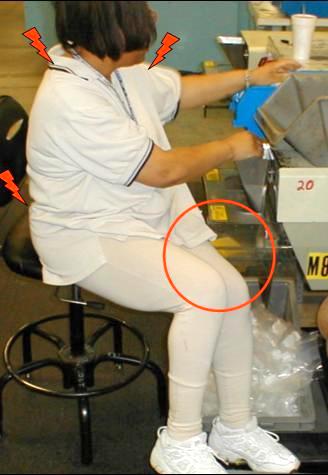 |
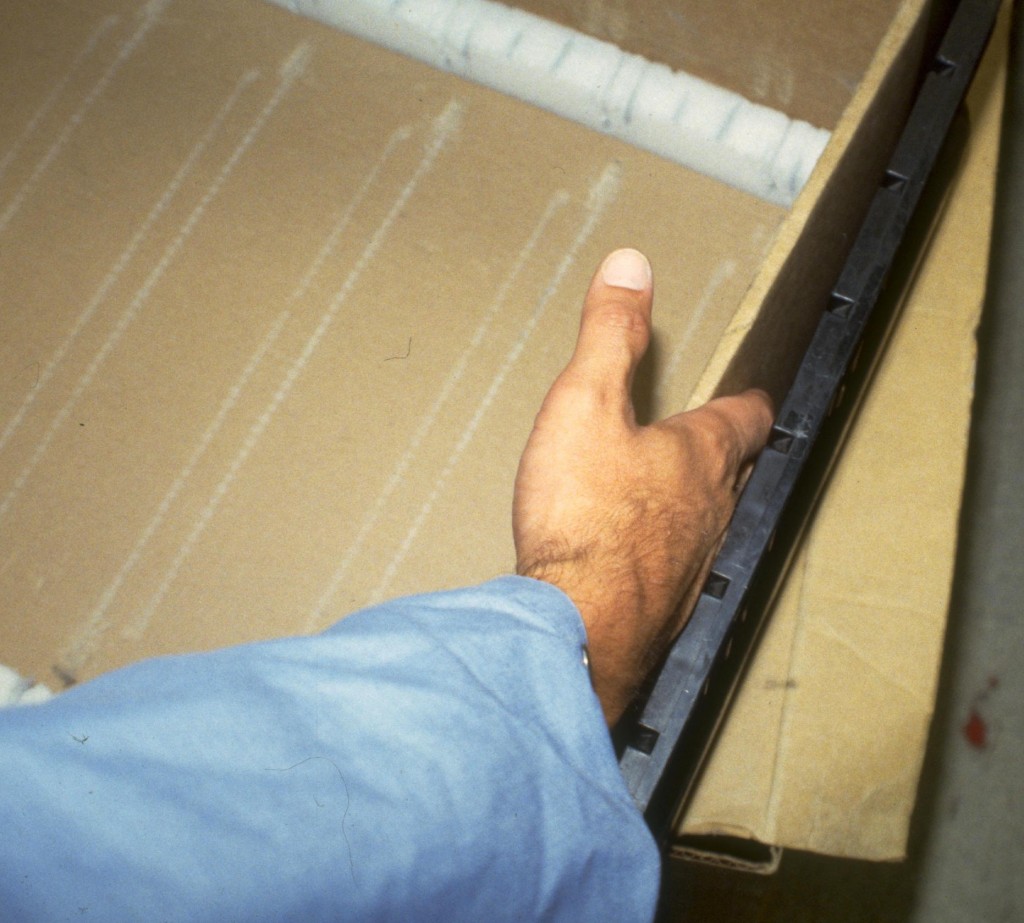 |
| No room for knees | No room for hand |
It is important that you have both adequate workspace and easy access to everything you need, with no barriers in the way. A common problem in the industrial workplace is insufficient knee space, although every part of the body can be affected — head, torso, feet, and hands. Clearance for tools, hardhats, and other apparel and equipment must also be taken into account.
Production issues
The lack of clearance can lengthen the time needed to perform a task. In some cases, such as maintenance access to equipment (see example below), the delays can be serious and even stop production. Furthermore, poor clearance can create problems such as long reaches and awkward postures, which interfere with production as described in those sections.
Employee well-being
The employee’s physical issues are usually related to (a) working in contorted postures and the ailments that can be related, and (b) discomfort and pain from any pressure points that may be created.
Strategies for improvement
Design for tall people
Knee space
Hand clearance
Maintainability
Visual access
Measurements
Design for tall people
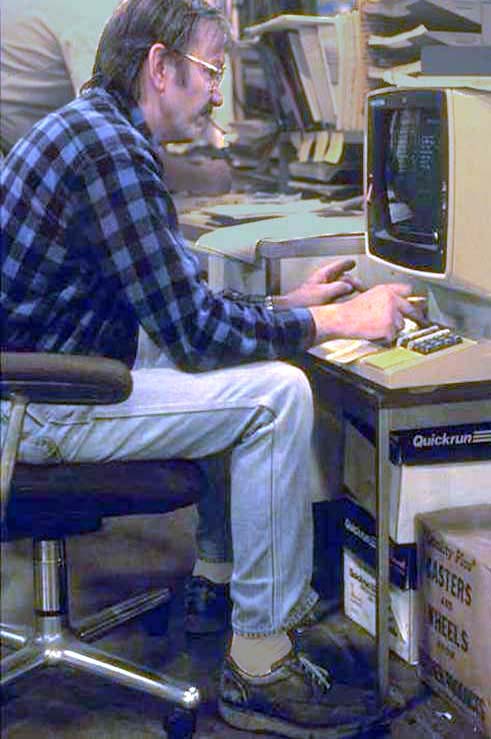
In general, the goal is to make sure that tall people have enough clearance, that is, room for the head, knees, elbows, and feet. If tall people can fit, then so can everyone else. To improve access:
- Reorganize equipment, shelves, etc.
- Increase the size of openings.
- Eliminate obstructions between the person and the items needed to accomplish the task.
Provide knee space
 |
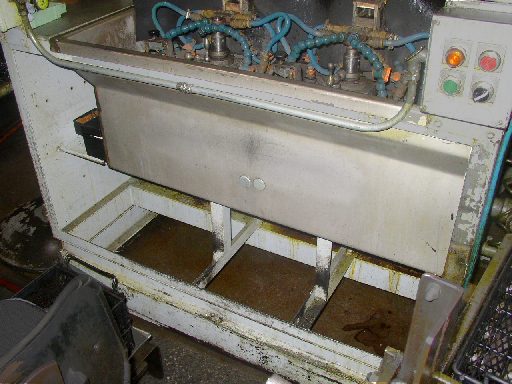 |
| Before: Lack of knee space creates long reach | After: Equipment front panel recessed to create clearance |
A common problem is lack of knee or thigh clearance on workbenches, desks, or other types of equipment where people sit. Improvements include:
- Equipment design to provide proper clearance
- Thin surfaces, with no hindering drawers
- Eliminate obstacles
See Workstations: Clearance
Provide hand clearance
 |
| Before: Display too close to handle (on warehouse order-picking lift truck) |
Equally important is having sufficient space for the hands in order to avoid “knucklebuster” injuries and simply to get the job done effectively.
See Material handling: Totes
Build in maintainability
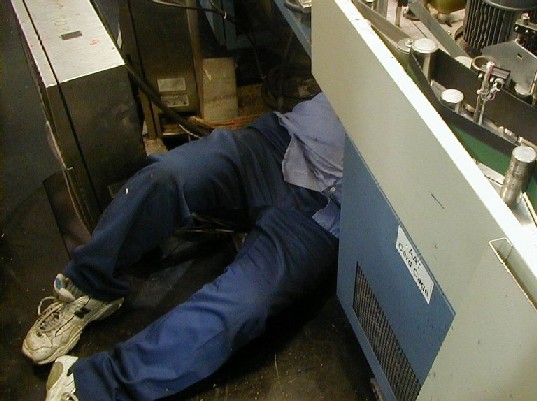 |
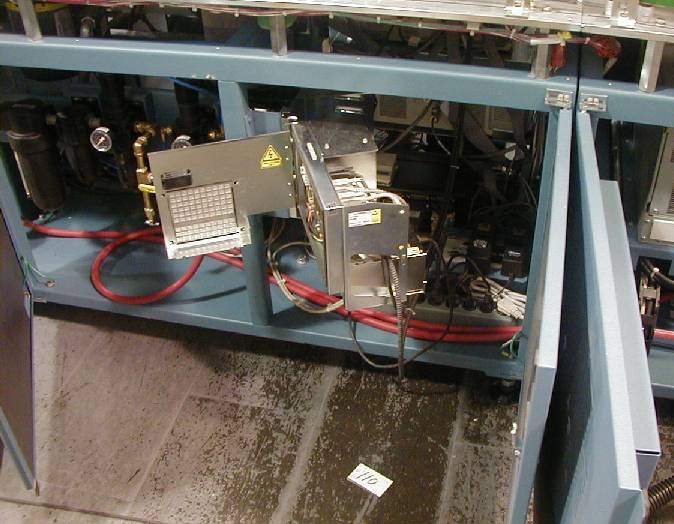 |
| Before: Difficult access | After: 2nd generation machine has swing-out access |
Probably the single biggest ergonomics problem for maintenance personnel is lack of clearance. Many activities would be simple to perform, if they could only reach an item and work on it with easy access. Unfortunately, too often the items to be fixed are buried within machines. The remedy is designing equipment with access in mind:
- Cover panels on hinges with quick disconnects
- Frequently maintained equipment located near access points
- Heavily accessed items on hinges to swing out into aisle
See Machine operations: Covers and doors; Maintenance: Access panels.
Provide visual access
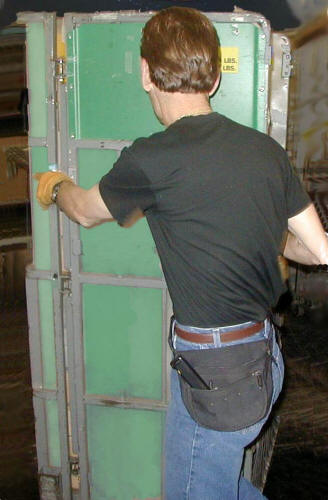 |
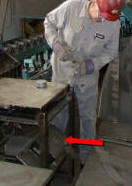 |
| Cannot see in front of cart | Cannot see dial (arrow) |
A related issue is not being able to see what you are doing. A common problem is blocked line of sight when moving a tall cart or lift truck. Similarly, some workstations and machines are inadvertently set up so that dials and displays are not visible from the operator’s position. See Workstations: Visual access
Measurements
Anthropometry provides data on human dimensions that can be used for guidance in providing sufficient clearance.
